On Dangerous Ground

Brief Synopsis
Cast & Crew
Nicholas Ray
Ida Lupino
Robert Ryan
Ward Bond
Charles Kemper
Anthony Ross
Film Details
Technical Specs

Synopsis
While hunting down the killer of a fellow policeman, veteran detective Jim Wilson grows increasingly morose and violent, causing his more even-tempered partners, Bill "Pop" Daly and Pete Santos, concern. Acting on a tip from a news vendor, Jim goes to see Myrna Bowers, whose boyfriend, Bernie Tucker, is rumored to be a cohort of the suspected murderers. Jim convinces the battered Myrna to reveal Bernie's whereabouts, and after he tracks Bernie down, beats him into betraying his partners. Although Jim's actions lead to the arrest of the killers, his superior, Capt. Brawley, informs him that Bernie's lawyer is threatening a brutality lawsuit and cautions him to take it easy. Later, however, while on patrol, the detectives hear a woman scream and discover Myrna being beaten by two thugs. Jim grabs one of the men and, without thinking, starts to rough him up. After interceding, Pop, a father of seven, angrily advises Jim to stop wallowing in the job. The next day, Brawley yells at Jim that he is becoming a liability to the department and assigns him to assist in the investigation of a young woman's murder in the rural north. Jim drives to the snowy mountain town of Westham, where Sheriff Carrey fills him in on the case. Carrey and Jim then go to the victim's home and talk briefly with her sister, Julie Brent, who witnessed the crime. Just then, the victim's brother rushes in to announce that the killer, a stranger, has been spotted running across a nearby field. Along with Julie's revenge-hungry father Walter, Carrey and Jim chase after the fugitive, but he hijacks a car before they catch up to him. Walter and Jim pursue in another car, but blinded by drifting snowfall, end up crashing into the killer's abandoned vehicle. The murderer's snowy footprints lead Jim and Walter to a farmhouse, where soft-spoken Mary Malden invites them in. Although Mary insists that she lives alone and has not seen anyone that night, Walter searches the house for clues. When Walter reports finding men's clothing in an upstairs room, Mary admits that her brother sometimes stays with her, but has been gone for a few days. The rifle-toting Walter demands to know where her brother is, but Jim, who has deduced that Mary is blind, suggests that they continue their search outside. Jim soon comes back inside, and he and Mary talk about loneliness and trust. Mary thanks Jim for not pitying her and, after insisting that he and Walter stay the night, confesses that her disturbed brother, Danny, is, in fact, hiding on the farm. Promising to protect Danny, Jim persuades Mary to talk to her brother about surrendering. At dawn, Mary slips out of the house and brings Danny, who is hiding in the storm cellar, some food. Although Mary convinces the confused teenager to "go away" with Jim, Danny runs off when Jim discovers them. Jim chases Danny to a shack, and there, while holding Jim at bay with a knife, Danny alludes to the fact that Mary passed up a sight-saving operation to stay with him after their mother died. Just as the unarmed Jim is about to grab the knife, Walter bursts in and fires a shot at Danny. Jim wrestles with Walter, knocking the rifle to the floor, and Danny takes off with the weapon. Jim and Walter pursue Danny to a rocky cliff and, while struggling to reach the top, Danny slips and falls to his death. Upon seeing Danny close up, Walter cries out that he is "just a kid" and carries his body to a nearby house. Later, a grief-stricken Mary says a tearful prayer over Danny's body, then stumbles back to her own home, followed by Jim. When Jim asks her about the eye operation, Mary admits she is afraid to try it, because its failure would mean the end of all hope. Crying, Mary begs Jim to leave her alone and, defeated, Jim heads for the city. As he nears his home, however, Jim reflects on what others have said about loneliness and need. Unable to return to his old life, he drives back to Mary, who embraces him with love.

Director

Nicholas Ray
Cast

Ida Lupino
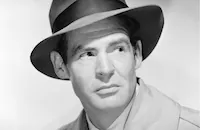
Robert Ryan

Ward Bond

Charles Kemper

Anthony Ross

Ed Begley

Ian Wolfe
Sumner Williams
Gus Schilling
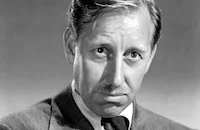
Frank Ferguson
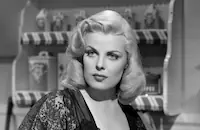
Cleo Moore
Olive Carey
Richard Irving
Pat Prest
Bill Hammond
Gene Persson
Ronnie Garner
Dee Garner
Harry Joel Weiss
Tommy Gosser
Ruth Lee
William Challee
Eddie Borden
Ken Terrell
W. J. O'brien
Jim Drum
Joe Devlin

Nita Talbot
A. I. Bezzerides
Tracy Roberts
Vera Stokes
Steve Roberts

Nestor Paiva
Leslie Bennett
G. Pat Collins

Vince Barnett
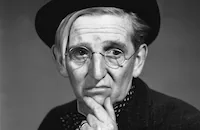
Jimmy Conlin

Joan Taylor
Kate Lawson
Esther Zeitlin
Budd Fine
Mike Lally
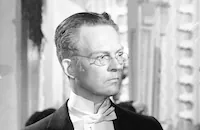
Don Dillaway
Al Murphy
Art Dupuis
Frank Arnold
Homer Dickinson
Crew
Landon Arnett
C. Bakaleinikoff
Jack Barron
S. H. Barton
Ralph Berger
Emmett Bergholz
Mel Berns
A. I. Bezzerides
A. I. Bezzerides
Phil Brigandi
John Burch
Buddy Clark
Albert S. D'agostino
Walter Daniels
George E. Diskant
William Dorfman
Sid Fogel
Larry Germain
Gene Gossert
Roland Gross
E. T. Harris
Maxwell Henry
Bernard Herrmann
George Hollister
John Houseman
Richard Irving
Fred Knudtson
Jack Lannon
Stan Magulies
Virginia Majewski
George Marquenie
Harold Mcniff
Harley Miller
John Peacock
Clem Portman
Nicholas Ray
Eddie Rhine
Lloyd Richards
Sid Rogell
Lou Shapiro
Cecil Shepherd
Ollie Sigurdson
Darrell Silvera
James Speak
Harold Stine
Dick Stockton
Josephine Sweeney
James Thompson
Marvin Weldon
Bill White
Ralph Wildman

Photo Collections
Videos
Movie Clip



Trailer
Hosted Intro
Film Details
Technical Specs

Articles
On Dangerous Ground
Robert Ryan stars as Jim Wilson, a New York City Police detective who's been transformed into a raging brute by the "human garbage" he's cleaning from the streets. (Taxi Driver's [1976] Travis Bickle would have loved this guy.) Wilson, who continually seems on the verge of popping his cork, has developed a tendency to beat his suspects to a pulp rather than simply interrogating them. His captain (Ed Begley) tries to give Jim some breathing room by, rather misguidedly, assigning him to a rural murder investigation.
Once released from his steel and cement hell, Jim promptly meets Walter Brent (Ward Bond), the vengeful father of a young girl who was murdered. It turns out that Jim and shotgun-toting Walter have a great deal in common, but Jim's world is further upended when he falls in love with Mary Malden (Ida Lupino), the sister of the killer. Mary begs Jim to capture her fleeing brother (played by Ray's nephew, Sumner Williams) before Brent finds him, knowing full-well that the other man will kill him in cold blood if he gets there first.
Ray stumbled across Gerald Butler's novel, Mad with Much Heart, while preparing a fittingly-titled soap opera called Born to Be Bad. The story of a cop who searches for a retarded killer and falls in love with the boy's sister, Mad with Much Heart was submitted to RKO Pictures as a possible future project for Ray. The studio's readers, however, felt it was unsuitable for filming.
Enter RKO producer John Houseman, who badly wanted to fulfill his contract with the studio and get away from its wildly erratic owner, Howard Hughes. Houseman managed to secure the rights to the novel when Ryan showed interest in the lead role. With three "name" talents attached, RKO grudgingly agreed to proceed with the movie...although not before issuing a memo saying that they might pull the plug at any time. Houseman later described his time at RKO as "among the darkest and most arid of my life." He labored in "a distasteful and unproductive atmosphere" that couldn't have been further removed from his creative (if highly combative) days with Orson Welles and The Mercury Theater.
Luckily, Houseman got along very well with Ray. Though he openly questioned On Dangerous Ground's storyline, he must have recognized that the picture benefited from Ray's hands-off approach to directing good actors. "I hate filmmakers who want long discussions with actors over a scene," Ryan later said. "An actor who doesn't know what a scene he's going to play is all about is in the wrong profession. Nick had, I think, great respect for me. Right from the start of our collaboration, he only offered me a very few suggestions."
The key unsung member of On Dangerous Ground's production team was screenwriter A.I. Bezzerides, who fleshed out the novel to Ray's specifications while injecting the scenes with memorably tough dialogue. Still, Houseman never warmed to the movie: "The character played by Bob Ryan was really essentially Nick's creation. So we had two pictures. We had the business of a good cop given to violence, and then we had the perfectly ridiculous plot about the blind girl and the boy, and all that...Al Bezzerides is a good writer, but I think he was always a little bewildered by that picture, as indeed I was. I just wanted Nick to get what he wanted and to do what he wanted, but I never quite understood what the hell he was doing."
That, however, is what many people like about the movie. The two distinct story lines play off of each other to peculiar effect, throwing off sparks when you're least expecting them. This off-kilter picture was groundbreaking in its own way, and has fully earned its status as a minor classic.
Producer: John Houseman
Director: Nicholas Ray
Screenplay: A.I. Bezzerides and Nicholas Ray (based on the novel Mad with Much Heart by Gerald Butler)
Editing: Roland Gross
Cinematography: George E. Diskant
Music: Bernard Herrmann
Art Design: Albert S. D'Agostino
Principal Cast: Robert Ryan (Jim Wilson), Ida Lupino (Mary Malden), Ward Bond (Walter Brent), Charles Kemper (Bill Daly), Anthony Ross (Pete Santos), Ed Begley (Capt. Brawley), Ian Wolfe (Carrey), Sumner Williams (Danny Malden), Gus Schilling (Lucky), Frank Ferguson (Willows), Cleo Moore (Myrna), Olive Carey (Mrs. Brent).
BW-82m. Closed captioning.
by Paul Tatara

On Dangerous Ground
On Dangerous Ground - Nicholas Ray's ON DANGEROUS GROUND on DVD
When he arrives in the town, Wilson is still the same man, but as time passes something changes inside, ever so slowly, in a way which is difficult to put into words. It's not so much that Wilson is "softened"; it's more that he becomes aware that there are positive things to live for. The murder investigation leads to a teenager (played by Nicholas Ray's nephew) and his blind older sister, played by Ida Lupino in the first of two pairings with Ryan. (Beware, My Lovely, 1952, would come next.) Ward Bond co-stars as the slain woman's father, who is out for quick, violent retribution by means of his rifle. He and Ryan spend a fair chunk of time chasing the teenager, with Ryan trying to prevent Bond from killing him - trying, in other words, to prevent violence. It's not hard to see Bond as Ryan's alter ego, in effect.
There are other films noirs that use rural landscapes as a contrast to the hard-boiled city, including one of the greatest of all, Out of the Past (1947), but it's hard to think of another which uses the contrast as emotionally and movingly as On Dangerous Ground. And for that matter, the contrast heightens the emotional effect of each world, not just the rural one. The opening section of On Dangerous Ground is as powerful and brutal an urban landscape as any in film noir.
On Dangerous Ground is available on DVD from Warner Home Video by itself or as part of the excellent box set The Film Noir Classic Collection Volume 3. Warners has put together another winner with this set. The print quality of On Dangerous Ground is quite good overall, though some shots look a bit murky. There are two extras - a commentary track and a trailer. Other extras this time around have been placed on a separate disc entirely: several Crime Does Not Pay short subjects (a couple of them quite brilliant), and a new documentary on the film noir style.
The commentary is delivered by Glenn Erickson, who reviews DVDs on his own website as well as for tcm.com. Erickson's verbal style is fast and dense, and he offers many interesting observations and a thorough recounting of the movie's production. A.I. Bezzerides adapted the screenplay from Gerald Butler's novel Mad With Much Heart, which was set in the English countryside and had neither a city sequence nor an internal struggle in the cop character. Erickson compares the book and movie well, and explains how the rest of the movie's story came together. He's also good on the differences between the screenplay and the final film, as there was a period of re-shooting and re-editing that went on for many months. Erickson even relates a few comments from Bezzerides himself; the two had some phone conversations in the years before Bezzerides died.
The trailer is worth watching, too. It's not only in great shape technically but is vividly produced: "Take a good, hard look at this man," intones a narrator. "Don't blame him if his face is hard, tough. If his eyes are cold and cruel. If his fists talk, and make talk... Only the worst can he see in people. And only violence can satisfy the hate inside him."
For more information about On Dangerous Ground, visit Warner Video.
by Jeremy Arnold
On Dangerous Ground - Nicholas Ray's ON DANGEROUS GROUND on DVD
Quotes
Trivia
Notes
The working titles of this film were Mad with Much Heart and Dark Highway. According to an October 1949 Hollywood Reporter news item, RKO purchased Gerald Butler's novel as a vehicle for Robert Ryan. Prior to filming, producer John Houseman, director Nicholas Ray and writer A. I. Bezzerides discussed the project with Los Angeles and Boston police departments, according to an April 1950 New York Times item. The police reportedly were pleased that the subject of police violence was to be treated openly and gave their approval to the production. According to modern sources, as part of their research, Ray and Bezzerides went on ride-alongs with detectives in Boston's South End, as well as with patrol officers in Los Angeles. In a modern interview, Ray stated that Ryan's character, "Jim Wilson," was modeled on a Boston detective, "a bachelor who began being a police officer in order to put his brother through college" and was almost kicked off the force due to excessive violence.
Modern sources note that, in addition to Ward Bond, the following actors were considered for the role of "Brent": Lee J. Cobb, Howard Da Silva, Albert Dekker, Rhys Williams and James Bell. Bond was also considered for the part of "Pop Daly," as were Wallace Ford, Ray Collins and Jay C. Flippen. In addition to Ida Lupino, Jane Wyman, Susan Hayward, Olivia de Havilland, Deborah Kerr, Janet Leigh, Wanda Hendrix, Lauren Bacall, Teresa Wright, Margaret Sullavan, Faith Domergue and Margaret Phillips, a Broadway newcomer, were suggested for the role of "Mary." Sumner Williams, who plays the killer "Danny," was Ray's nephew. Location shooting took place in Granby, CO, according to RKO production files contained at the UCLA Arts-Special Collections Library. According to modern sources, Ryan and Lupino persuaded Ray to change the scripted ending, in which "Jim" leaves a crying "Mary" with no reconciliation, to the more upbeat conclusion seen in the finished film. Modern sources note that the picture lost $425,000 at the box office.

Miscellaneous Notes
Released in United States on Video April 25, 1990
Released in United States Winter January 1952
Released in United States Winter January 1952
Released in United States on Video April 25, 1990















